From the Statue of Liberty to California’s redwood forests and deep into the mysteries of the Southwest, UNESCO has acknowledged 25 sites of outstanding value in the USA. Twelve sites are cultural, twelve are natural, and one is both. And, eighteen more sites are on the nomination list. If you love road-tripping, consider planning a route around UNESCO Sites in the area where you’ve traveling.
You may also want to fly into a region, and dive into its UNESCO Sites. Whether you fly or drive, you can expect lodgings that range from cabins to luxury hotels and spas. In each UNESCO designated area, you will experience local lore, legends, art, and unique taste sensations.
Below, we break the USA into six regions. Pick one to visit, or all, and dream on!
THE EAST
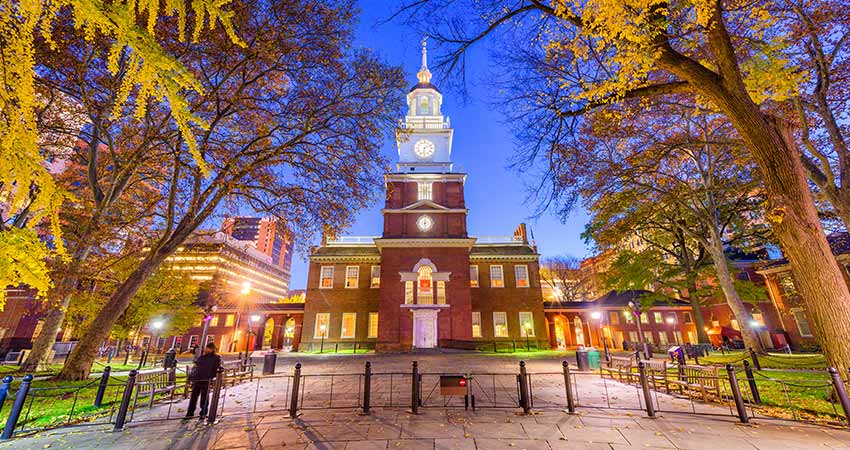
Independence Hall: Philadelphia’s oldest buildings are lovingly preserved and a window into the history of democracy in the USA. In 1790, this city was the young nation’s capital. Independence Hall is known as “the birthplace of American government.” This is where delegates from the original 13 states met to approve and ratify the Declaration of Independence on July 4, 1776.
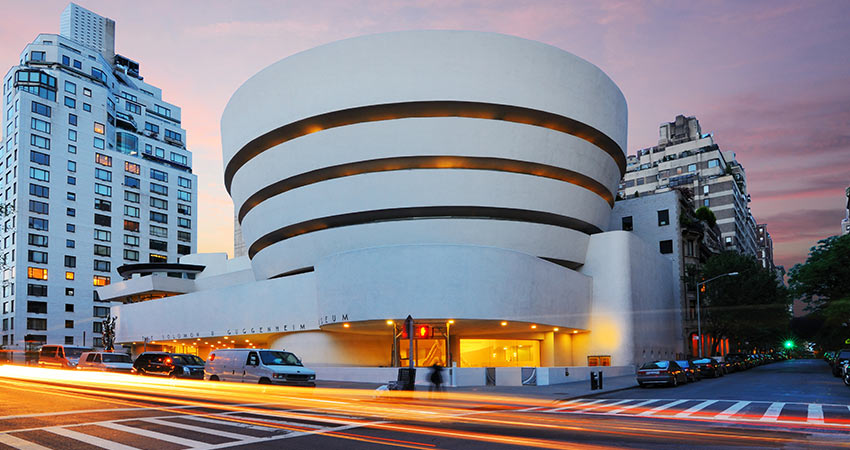
Statue of Liberty: Head up to the statue’s crown for sweeping views of New York and the harbor. Given to the USA by France, the statue symbolizes opportunity and hope for all. The 20th-Century Architecture of Frank Lloyd Wright: These eight buildings, by Frank Lloyd Wright, had a global impact on architecture. They include Fallingwater in Pennsylvania and the Guggenheim Museum in New York. His designs reflect the organic architectural style he pioneered, blurring the lines between exterior and interior environments.
THE SOUTHEAST
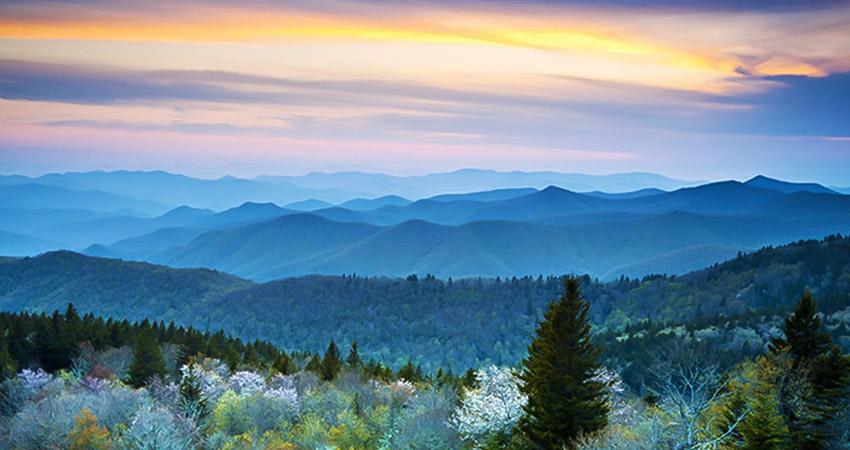
Everglades National Park: Called “The River of Grass” by Native Americans, visiting this 1.5 million-acre wilderness is a dream. See alligators napping, herons swooping across the sky, and flamingoes walking the waters. Go kayaking, strolling in mangroves under the moonlight, and be amazed by 10,000 islands. Great Smoky Mountains National Park is early natural and cultural Americana at its finest. More people visit here than any other American park. This vast area of 521,000 acres includes a pioneer homestead, astonishing views, dense forests, meadows, and plenty of activities.
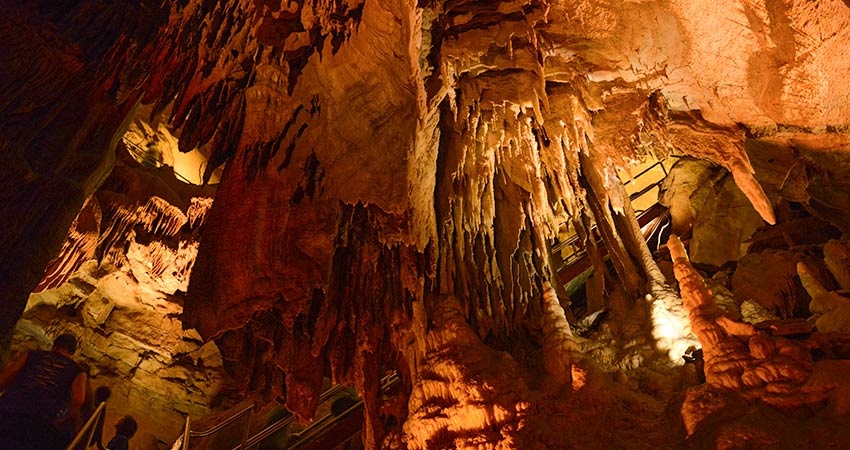
Mammoth Cave National Park: Located in Kentucky, Mammoth Caves has 400 miles of known passageways, making it the longest cave system in the world. This area of gigantic cathedrals, curving rock formations, and deep holes, was used by prehistoric man. Monticello and the University of Virginia in Charlottesville: Monticello was designed by Thomas Jefferson as his home. He also created his “academical village,” still the center of the University of Virgina. His architectural style was a perfect fusion of American and Classic European lines. Visit, and you’ll see the values Jefferson held dear. Monumental Earthworks of Poverty Point, located in Louisiana, consists of five mounds, six concentric ridges, and a central plaza. This was built by hunter-gatherers in 3700 BC for homes and ceremonies. It is a stunning example of earthen construction.
THE MID-SECTION
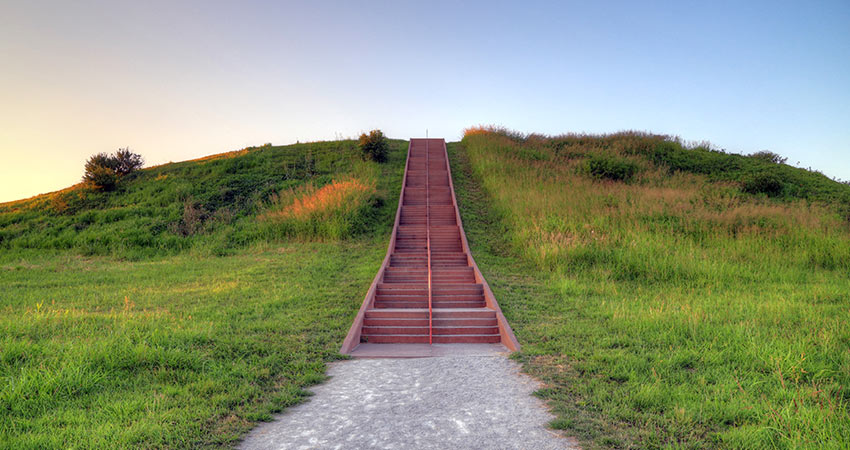
Cahokia Mounds State Historic Site, just outside of St. Louis, MO, is the largest pre-Colombian site north of Mexico. Inhabited from 800 – 1400 AD, it included 129 mounds—a powerful example of chieftain society. There are also hamlets and villages, and at one time it had a population of 10,000 to 20,000 people. One prehistoric earthwork is 90 feet high.
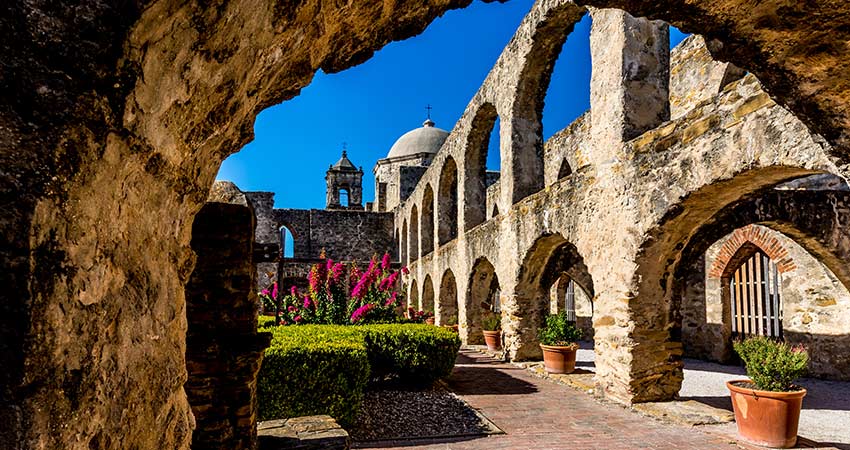
Hopewell Ceremonial Earthworks, located in Ohio, were built 2,000 years ago. They represent Indigenous culture, with sculpted hilltops, plazas, complex astronomy, and ceremonial objects. The San Antonio Missions are five frontier missions, farmlands, churches, water systems, and granaries, built by Franciscan missionaries. They are an example of Spain’s goal of colonization and the defense of their new frontier. Many decorative elements of the church combine Catholic and Native symbolism.
WEST
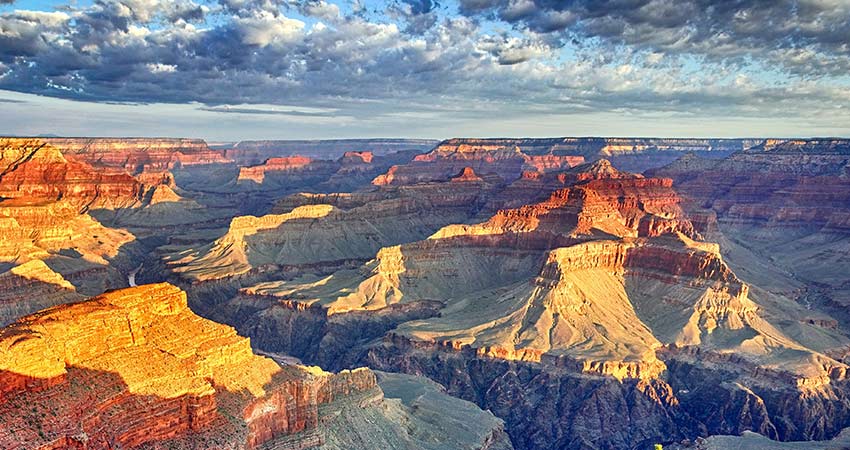
Visit the western United States and you’ll experience a bounty of natural and cultural UNESCO sites. The Chaco Culture UNESCO Sites are in the four-corners region of the US. From 850 – 1250 BC, it was the center for ceremonial, political, and trade activity for thousands of people. (Climb on a bluff in the four corners, and you may still see tracks, all leading to Chaco.) This ancient urban center is like no other in the world. Taos Pueblo is a Pueblo Indian center, in the Rio Grande Valley, that has been inhabited by a matrilinear society for 1,000 years. The Sacred Blue Lake, above Taos, is the source of the stream that runs through the village.
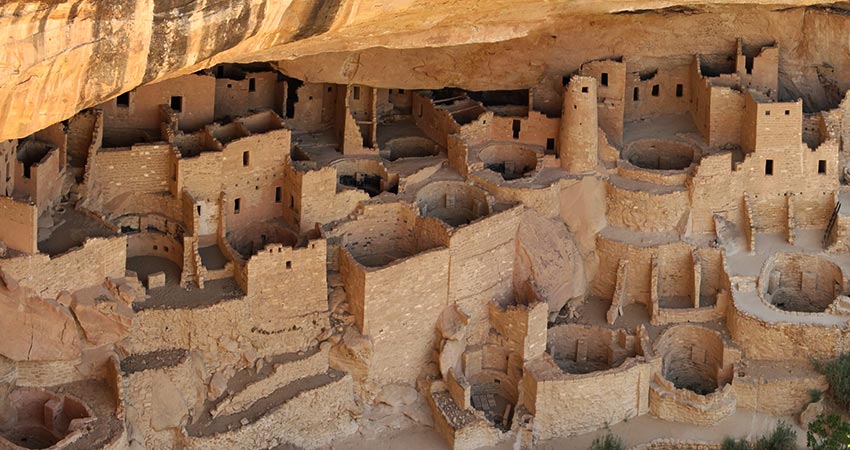
Mesa Verde National Park is a complex of dwellings built between the 6th to 12th centuries. This Southwest Colorado Park has an elevation of more than 7,000 feet. 4,400 sites have been recorded, including stone cliff dwellings with more than 150 rooms, pit houses, and villages on the mesa top. To visit is to be amazed. Grand Canyon National Park is truly one of the natural wonders of the world. Four rivers feed into the Colorado River, which carved this spectacular gorge over millions of years. The layers of time are laid bare, tracing two billion years of geologic history. Stop into the Watch Tower after exploring the park. Mary Colter designed it using local Hopi artists. Beautiful.
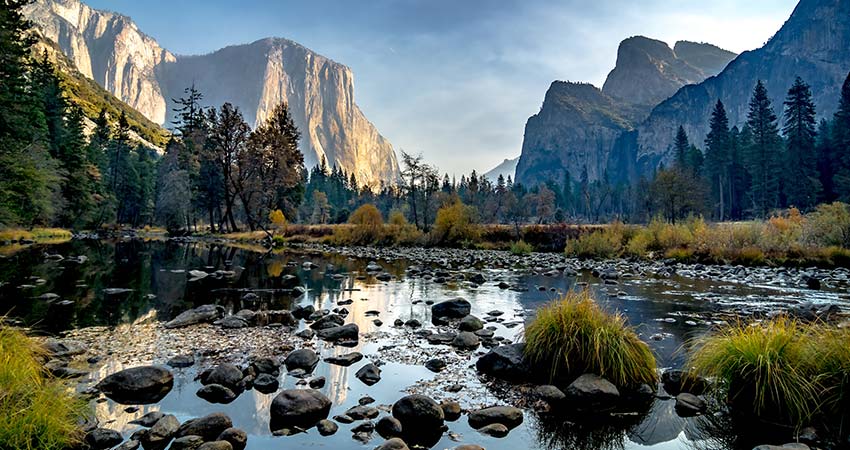
Redwood National and State Parks are home to the tallest trees on Earth and some of the oldest. Stand beneath their sheltering branches, and breathe deeply. The air feels sweet and pure. Besides the trees, which are grouped in families, the area has vast prairies, wild rivers, oaks, and miles of rugged Northern California coast. It’s also home to sea lions, bald eagles, and California brown pelicans. At the end of the day, enjoy a glass of wine—this is also California wine country. Legendary Yosemite National Park in the heart of California, has unique hanging valleys, one of the world’s highest waterfalls, granite formations, groves of giant Sequoia, alpine meadows, diverse flora and fauna, as well as the iconic Half Dome and El Capitan.
ROCKY MOUNTAINS, ALASKA, & THE NORTHWEST
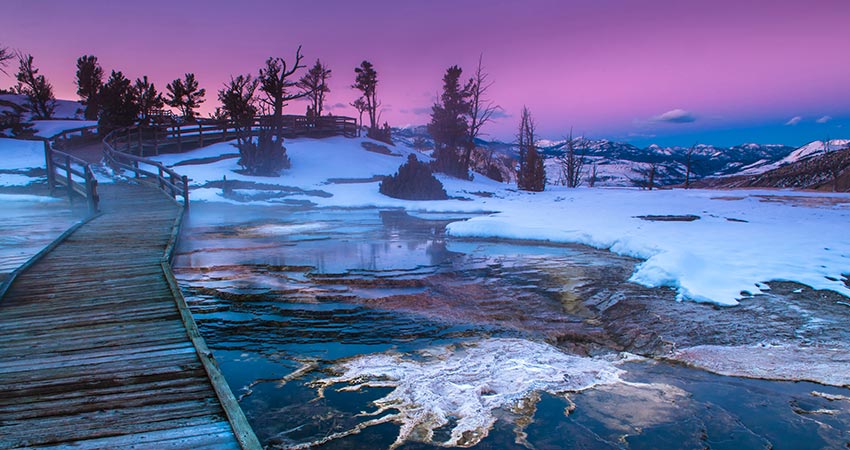
Waterton Glacier International Peace Park was created in 1932 when Canada’s Waterton National Park was joined with Montana’s Glacier National Park. The world’s first Peace Park, the scenery at this border is simply stunning. Its diversity of plant and animal life, as well as its forests, prairies, alpine, and glacial features, make this a UNESCO natural. Yellowstone National Park should be on everyone’s travel bucket list. Smoldering pots from the middle of the earth, bison, elk, moose, bear, and wild rivers are sensory heaven.
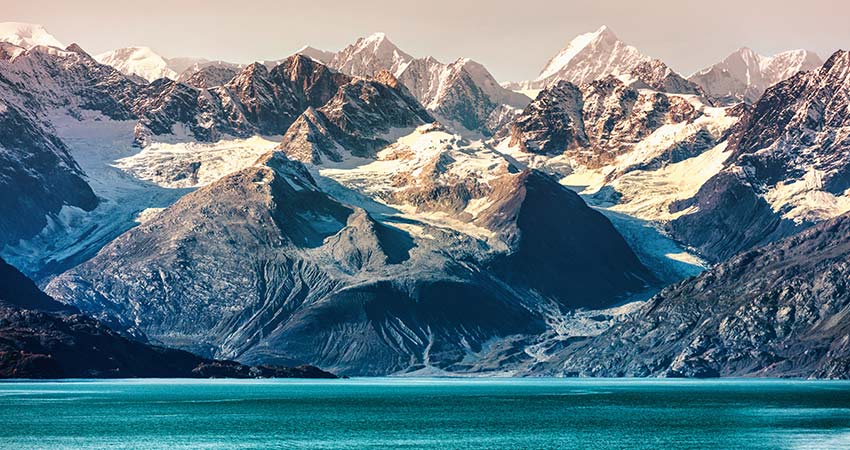
Kluane / Wrangell-St. Elias / Glacier Bay / Tatshenshini-Alsek parks are a grouping of glaciers and high mountain peaks that range between the Yukon Territory, British Columbia, and Alaska. This largest non-polar icefield in the world is home to caribou, grizzly bears, and Dall’s sheep. Olympic National Park, in northwestern Washington, is a veritable treasure trove of ecosystems, and all are in love with a moist environment. This temperate rainforest is heaven for fish species, and the wilderness coastlines form the longest undeveloped coast in the lower 48 states.
OCEAN AREAS
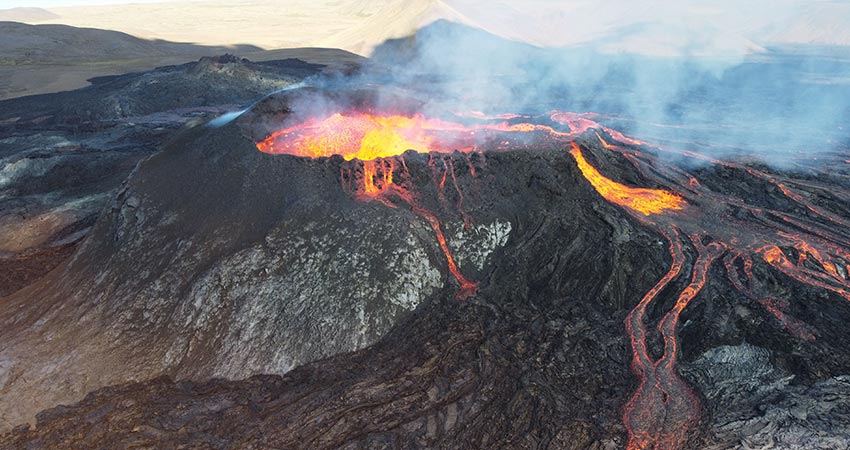
Hawaii Volcanoes National Park, on the Big Island of Hawaii, has two huge volcanoes—Mauna Loa and Kilauea. They are two of the world’s most active, and easy to reach, volcanoes. They rarely explode, but they do send up dramatic fountains of molten smoke and lava. This 520-acre area is also a Biosphere Reserve. Visit this sacred spot, and you’ll discover the intimate connection between Native Hawaiian Culture and nature.
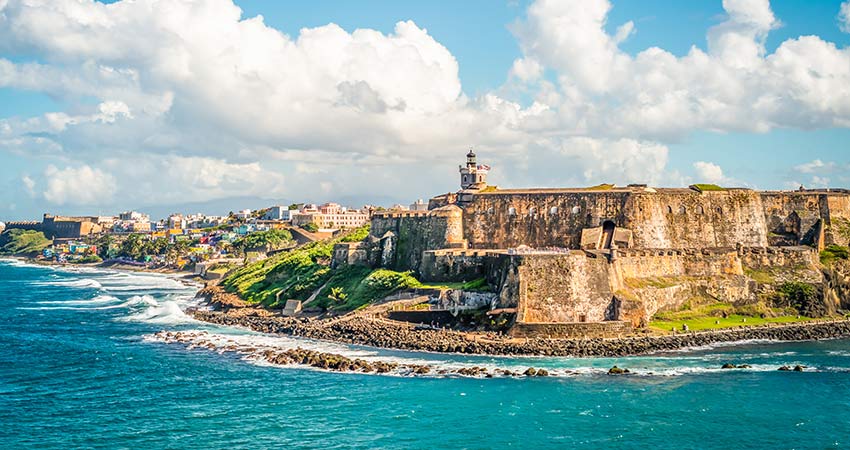
Puerto Rico’s La Fortaleza and San Juan National Historic Site is an excellent example of historic European defensive structures that were raised up in America. Papahānaumokuākea is a 1,200 mile-long stretch of islands and reefs that run northwest of the Hawaiian Islands. This enormous protected area is a safe haven for coral reefs as well as hundreds of endangered species. It is one of the Earth’s last healthy marine ecosystems.
The United States has an unparalleled number of UNESCO Sites that offer nature at it’s most magnificent, and cultures that draw us into their mystery. As diverse as the population, each site is a love song to the region where it exists. Put several UNESCO World Heritage Sites on your must-travel list, and feel your world expand!!
Tell your Destination Expert where you want to take a USA vacation, and ask them to introduce you to the nearby UNESCO Sites. Happily enough, you’ll find them throughout the entire United States!









